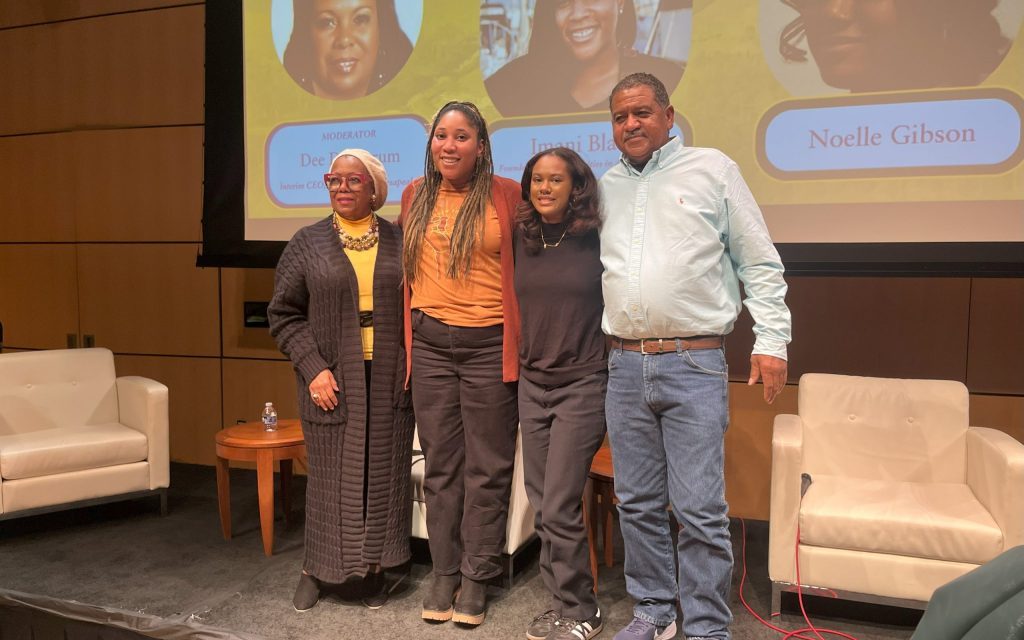
By Megan Sayles
AFRO Staff Writer
msayles@afro.com
The late Vincent Leggett, named admiral of the Chesapeake by former Maryland Governor Parris N. Glendening in 2003, dedicated his life to preserving and amplifying the stories of free and enslaved African Americans who were the backbone of Maryland’s seafood and maritime industries. His organization, Blacks of the Chesapeake, has been documenting the impact and contributions of Black sailors, oystermen, crabbers, longshoreman, sailmakers, boat builders and more since 1984.
In 2023, Leggett and other Marylanders dedicated to carrying on the legacy of these unsung trailblazers became subjects of Alexis Aggrey’s documentary film, “Water’s Edge: Black Watermen of the Chesapeake.” On Feb. 1, the Reginald F. Lewis Museum of African-American History and Culture and the Institute of Marine and Environmental Technology (IMET) held a screening and panel discussion for the film, inviting the public to learn more about these untold stories.
“I want to be clear, not only were we pioneers in running boats and picking houses– we were leaders. We were owners in these areas— owning boats, building boats, making sails, owning picking houses and the like,” said Drew Hawkins, chair of the Reginald F. Lewis Museum’s board of directors. “We crafted terms that are popularly used today when we talk about crab meat. Our impact has really been far and wide.”
Some of the pioneers covered in the film included Captain George Brown, the Turner family of Talbot County and Downes Curtis. Under the segregation of Jim Crow America, Brown amassed enough capital to acquire a steamboat, the “Starlight,” and a beach, which he named Brown’s Grove. In 1914, he began transporting African-American families to the Anne Arundel County beach for day trips during a time when they were not welcome at popular beaches, like the Tolchester Beach Amusement Park.
The Turner family, seafood legends of Bellevue, Md., were property owners, crab and oyster traders and boat builders. They ran two notable seafood processing houses, W.A. Turner and Sons and Bellevue Seafood Company, from the mid to the late 1900s. The success of the enterprises, which employed many of the town’s residents, made the predominantly Black community self-sufficient.
Curtis, of Oxford, Md., and his brother, Albert, learned sailmaking from Englishman Dave Pritchett. Following Pritchett’s death in 1936, the brothers carried on his work running a sail loft. The Curtises became renowned for their sails, cutting them for noteworthy figures like the Kennedy family and actor Jackie Gleason.
Today, watermen, like Captain Tyrone Meredith, have made careers out of running charter boats for people interested in fishing. The fifth generation fisherman operates the longest headboat in the Kent Narrows fishing fleet, the “Island Queen.”
The screening of “Waters Edge: Black Waterman of the Chesapeake” was held in memory of Leggett, who died in 2024 at age 71. A Baltimore native, Leggett penned two books to expose readers to the contributions of African Americans in the seafood and maritime industries, “Blacks of the Chesapeake: An Integral Part of Maritime History,” and “The Chesapeake Bay Through Ebony Eyes.”
One of his greatest achievements was a 17-year campaign to preserve the last five acres of the once 180-acre Elktonia Beach, an Annapolis property purchased by formerly enslaved man Frederick Carr in 1902. The spot became a flourishing resort for Black beachgoers. Leggett led an effort to save the beach from development, and it was instead turned into a public park.
“Vince would have been over the moon,” said Aldena Legget, his wife, at the screening. Vincent Leggett died on Nov. 23, 2024. “This is what he loved. He loved history. He loved Black history.”
Dee Dee Strum, interim CEO for Blacks of the Chesapeake, described Leggett as a humanitarian and boundary crosser.
“He felt that the story of African Americans as major contributors to establishing Maryland as a global powerhouse for sailing, the seafood industry and the maritime industry needed to be told. All of that was fueled originally by enslaved Africans who actually were brought here by written orders,” said Strum. “They wanted persons from African tribes brought here to this region who had experiences in working the waterways in Africa.”
Considering the substandard health of the Chesapeake Bay today, Strum said the organization’s top priority this year is pushing environmental justice, the larger umbrella of Leggett’s work. She wants to ensure there is a pipeline for youth of color to become environmentalists and restore the bay.
This becomes even more critical as the historical denial of access to public pools and beaches for African Americans has perpetuated a stereotype that Black people don’t like the water, according to Strum.
“We have to make way for them to feel welcomed at the waterways,” said Strum “This is their bay. It’s our bay. It’s everyone’s bay.”
The post Uncovering the untold stories of waterman on the Chesapeake appeared first on AFRO American Newspapers.











